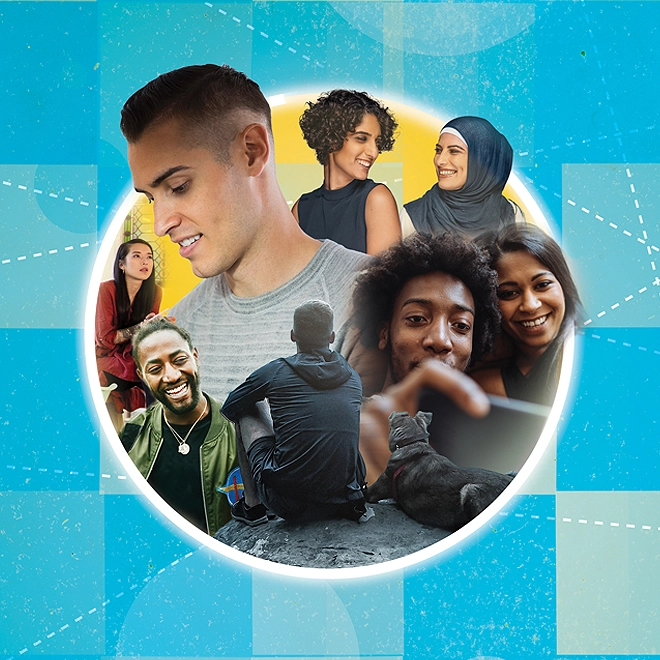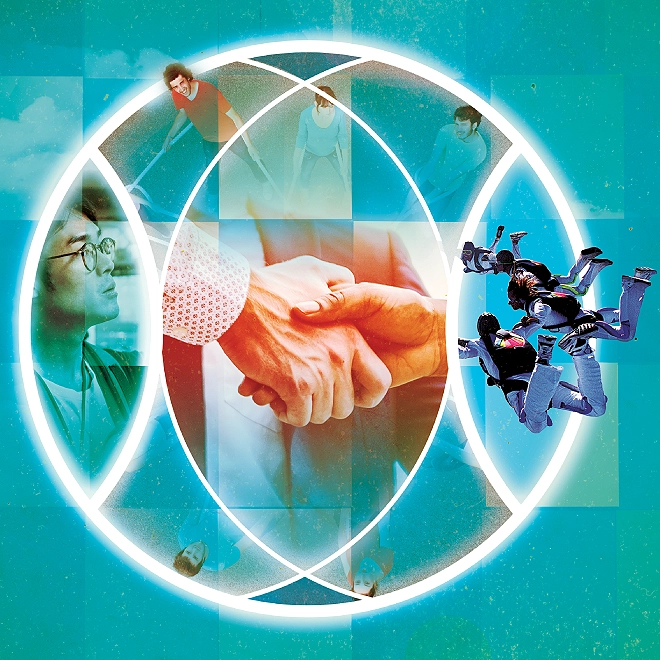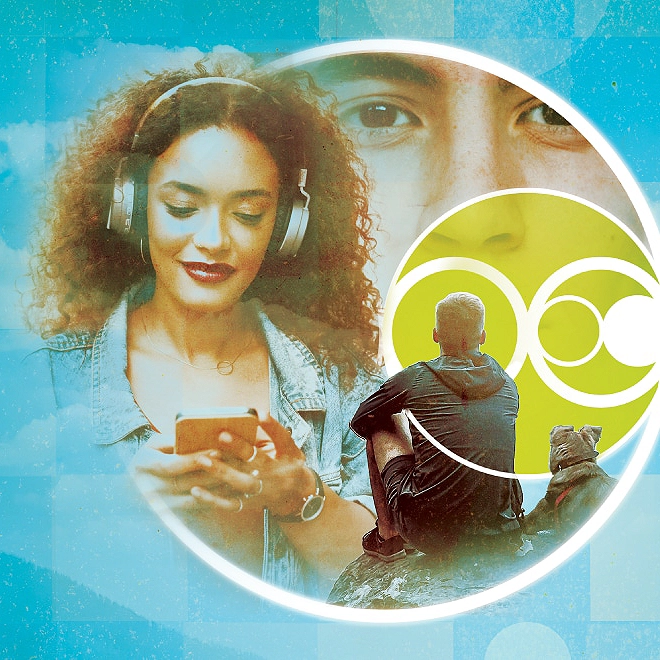Paying down experience debt
How brands are refocussing their values to elevate the human experience
Making marketing more effective comes from understanding your customers, workforce and partners through a human lens. See how impactful this approach can be.
AS you’re likely reading this article on your digital device of choice, you don’t need to be reminded of the omnipresence of all things digital in human life today. Instead of going to a bookstore and taking tips from fellow bibliophiles on our next read, we check online reviews and order books digitally.1 Automated checkouts allow us to circumvent small talk and eye contact with the cashier. We “like” our friends’ posts on social media rather than telling them in person that we like them. And autonomous vehicles will one day likely let us literally fall asleep at the wheel.
Indeed, digital technologies can make it easier for us to navigate through our busy lives, but they also can erode the fundamental elements of human connection. Despite efforts to replicate human behaviour and gestures through automation and AI, the essentials of human connection—eye contact, personal touch, empathy—remain irreplaceable by technology. So, when digital connection—personal and professional—lack a human touch, it can create an environment where people feel isolated, underrepresented and unfulfilled. This can result in people opting for quick answers to narrowly defined problem sets versus more sustainable solutions that take into account what it means to be human.
We believe that the rapid pace of digital change is adding to a buildup of these unintended consequences, which we call experience debt. Why is this? As many behavioural psychologists will tell you, humans are inclined to trade the hard choice of tomorrow for the easier solution today. This is evident in the trillion-dollar debt of the US government and the United States’ collective personal credit card and student loan debt—US$423.8 billion and US$1.5 trillion, respectively.2
In the realm of technology, easier choices made today by companies can result in a heavy technical debt for them later (think cutting corners on an IT project to meet mounting business pressures or lack of stakeholder understanding of the technical implications of launching a new ERP system). This innate human tendency to put off hard choices makes us wonder how often businesses are making easier choices about the digital frontier that do not factor in the human.
Consequently, this experience debt can have far-reaching implications for the humans who navigate these digital solutions. Here are some examples: The integrity of our news feeds can be diminished by outside influencers; studies reveal that while social media can make us more connected, it can also leave us feeling isolated from society and envious of others; 3 facial recognition technology can accelerate processing times at borders and secure mobile devices, but it may be less effective in accurately identifying women and people of colour;4 biassed data can unintentionally lead to racially biassed prison recidivism algorithms; 5 and when our technologies lack inclusive design, we can end up with products such as retina scanners that don’t factor in those in wheelchairs.6
So, how do we reduce this experience debt? If “going off the grid” or leaving it to lawmakers doesn’t work for you, then we have another, perhaps bolder, option: Pay down experience debt by elevating the human experience. For businesses, this means striving to address the unmet human need for connection by aligning customers, the workforce and partners to a common purpose (see our trend on purpose to learn more). In this article, we explore how some core tenets discovered in our prior research on human values can help companies elevate the human experience in a manner that emphasises the human.
Designing with empathy
John Steinbeck, who won the Nobel Prize in Literature in 1962, eloquently wrote, “You can only understand people if you feel them in yourself.” At its core, empathy can equip you with perspective. If you have empathy, you can better design for the human experience because you intimately understand how your stakeholders find meaning and belonging in products and services. Of course, it can be easier to be empathetic if you share the same values with those you’re looking to serve—this means being congruent in your values across customers, workforce and business partners.
In fact, our prior research on human experience found the organisations that align their values best with their stakeholders are also the most successful in terms of workforce and customer satisfaction.7 Further, over a three-year period, these same organisations are twice as likely to outperform peer groups in revenue growth (see sidebar, “Quantifying the human experience” to learn more).
Quantifying the human experience
Recently, we conducted research to better understand how organisations can authentically—and empathetically—elevate the human experience.8 After years of viewing the customer experience and the workforce experience as isolated initiatives, many organisations achieved only marginal results. Thus, many began to integrate the two. However, we saw that the most effective results are achieved by aligning and connecting the customer, workforce and business partner experiences through shared values.
To better identify—and quantify—the shared values of customers, workforces and partners, we developed the human values compass. Drawing on more than 200,000 behavioural data points, attitudinal statements and demographics, we found four cardinal human values: personal achievement (me), belonging (we), curiosity (unknown) and control (known). Certainly, the pairs “me and we” and “unknown and known” are inherently at odds. But as figure 1 shows, there are four more values that arise when these cardinal values interact: trying new things, learning new things, sharing with others and caring for others.
From our work on the human values compass, we found that no matter what your customers, workforce and partners value, five tenets contribute to elevating the human experience:9
- Being obsessed with all things human.
- Proactively delivering on human needs.
- Executing with humanity.
- Being authentic.
- Working to change the world.
When a business can identify these values and work towards building solutions that align to them, it can elevate the human experience.
Read Deloitte Digital's article, “We’re only human: Exploring and quantifying the human experience,” to learn more.

Delivering on human experience
During our research, we came across three powerful examples of companies that used a set of shared values to build more connected and inclusive human experiences. Businesses can draw inspiration from them to work towards delivering an elevated human experience.
- Leadership at General Motors (GM) to change the world through “Zero, Zero, Zero.” 10 Acknowledging the power of its platform and driven by an organisational desire to influence and shape the outcomes of all the people it touches, GM declared “zero crashes, zero emissions and zero congestion” as the company’s purpose and mission for a better world. In an era of deregulation in the United States, this statement demonstrates GM’s commitment to building a more sustainable world, placing change at the centre of its vision, values and future business.
- Walgreens launches the “Feel More Like You” programme.11 Walgreens has long employed beauty consultants to help people find the right products for any occasion. But what about those going through one of the most trying times of their life—cancer patients? Recognising the physical and emotional toll cancer survivors go through and its impact on self-image, Walgreens created a more human experience through its Feel More Like You programme. By partnering with Look Good, Feel Better (a cancer support programme specialising in patient beauty needs) and the Cancer Support Community, Walgreens trained its beauty consultants and pharmacists to help patients hold on to (or reclaim) their sense of self. Services under the programme include advice on hair loss, skin and nail problems and fatigue, to name a few.
- REI’s #OptOutside for Black Friday. While many use the Thanksgiving holiday to rush to the store or shop online for the best holiday deals, outdoor retail cooperative REI knows that its workforce and customers value connecting with others through a shared love of the outdoors. To lessen the holiday stress and adhere to its core values, REI closes all 200 of its stores on Thanksgiving and Black Friday to encourage its workforce and customers to spend time outside with their loved ones (all 12,000 employees receive paid time off).12
Connecting to the human spirit
Despite our innate desire for greater and deeper connections, the pace of digital change can make it very easy for us to disengage and disconnect from what makes us human. However, connected technology is likely here to stay—for good or for bad. Now it’s upon us—individually and at the organisation level—to help ensure technology connects with the human spirit and elevates the human experience rather than dampen the spirit and down human connections.

Deloitte Digital
Digital technology has changed the face of business. Across the globe, Deloitte Digital helps clients see what’s possible, identify what’s valuable and deliver on it by combining creative and digital capabilities with advertising agency prowess and the technical experience, deep business strategy and relationships of the world’s largest consultancy. Deloitte Digital empowers businesses with the insights, platforms, and behaviours needed to continuously and rapidly evolve to perform beyond expectations.



